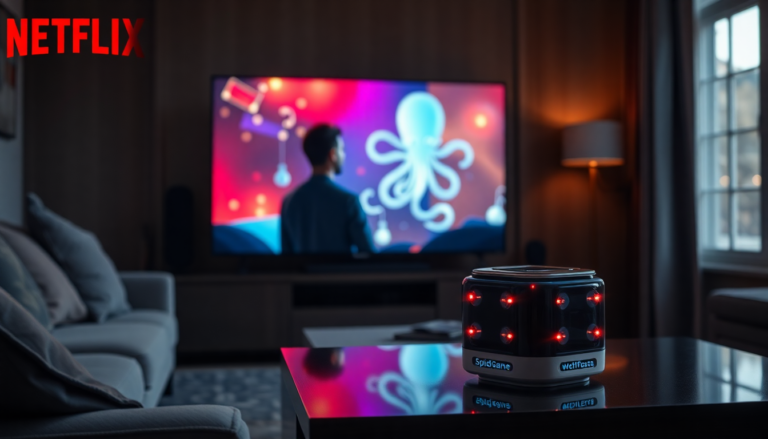Argomenti trattati
Imagine you’re immersed in the thrilling world of *Squid Game*, adrenaline pumping, and then—bam!—a robotic voice interrupts the tension to pitch the latest gadget. Welcome to Netflix’s new ad strategy, where AI-generated interruptions are becoming the norm. As the streaming giant continues to evolve, its approach to advertisement is raising questions about viewer experience and content integrity. Why is this happening, and what does it really mean for subscribers? Let’s delve into the nitty-gritty of Netflix’s latest gamble.
Netflix’s bold move into AI-generated advertising
In a recent meeting, Amy Reinhard, Netflix’s President of Advertising, claimed that viewers are just as engaged with mid-roll ads as they are with their beloved shows. Really? I mean, come on—have you ever seen anyone actually pay attention to those ads? It feels like a stretch, doesn’t it? Even the most die-hard fans of Netflix programming might find it hard to swallow the idea of AI-generated content interrupting their binge-watching sessions. It’s like having a loud neighbor yell during your favorite scene.
Yet, Netflix seems determined to push forward with this strategy, aiming to seamlessly blend ads into the viewing experience. Picture this: you’re watching *Stranger Things*, and suddenly there’s an AI-generated overlay that not only distracts you but also feels out of place. It’s reminiscent of those cringe-worthy ads that were inserted into classic movies—only this time, they’re crafted by an algorithm instead of a creative team. Some might say it’s a low-rent approach, lacking the charm of human creativity.
A questionable audience engagement strategy
But let’s take a moment to consider the implications. Could this be a clever way to engage viewers, or are we merely witnessing a desperate attempt to monetize every moment of our attention? Many are skeptical about AI ads boosting customer engagement. After all, who wants to be interrupted by a digital salesman when they’re trying to escape into a fictional universe? Personally, I can’t help but think that random AI-generated ads could be the final nail in the coffin for my Netflix subscription.
As reported by *The Verge*, Netflix plans to introduce pause ads that are themed around the content being watched. That sounds intriguing, right? But then again, I can’t shake the feeling that it might come off as annoying rather than engaging. It raises an interesting question: will viewers feel more inclined to purchase products if they see them integrated into their favorite shows? Or will this strategy backfire, pushing subscribers away from the platform?
Potential copyright concerns loom large
Moreover, let’s not overlook the potential legal ramifications. Where exactly will the data for these AI-generated ads come from? Will Netflix need to feed every show and movie into the algorithm to ensure seamless product placements? This could raise significant copyright issues for the creators and artists behind those shows. As many know, the entertainment industry is already fraught with legal challenges, and this could add another layer of complexity to an already tangled web.
Instead of pushing AI-generated ads as the next big thing, perhaps Netflix should focus on enhancing the overall subscription value. I remember when Netflix was all about quality content and user experience—those were the days! Expanding Netflix Gaming or granting more seasons to popular shows could be a far better investment of resources. Wouldn’t that be refreshing?
The road ahead: A reflection on viewer experience
As we move into 2025, it’s clear that Netflix’s advertising strategy is a topic of heated debate. Are they simply trying to keep up with the competition, or are they genuinely paving the way for a new era of viewer engagement? Personally, I’m torn. While innovation is crucial for survival in the streaming wars, the risk of alienating subscribers is a gamble that could have long-term consequences.
In the grand scheme of things, the effectiveness of AI-generated ads remains to be seen. Whether they enhance or detract from the viewing experience is the million-dollar question. For now, viewers are left to ponder the future of their favorite streaming service and whether the ads will ever be more entertaining than the content itself. Who knows? Maybe one day we’ll look back and laugh at this as just another quirky phase in the evolution of entertainment.
As for me, I’m keeping a close eye on how this unfolds—because, let’s face it, the last thing any of us wants is to have our favorite shows hijacked by ads that feel more like glitches in the matrix than clever marketing.

